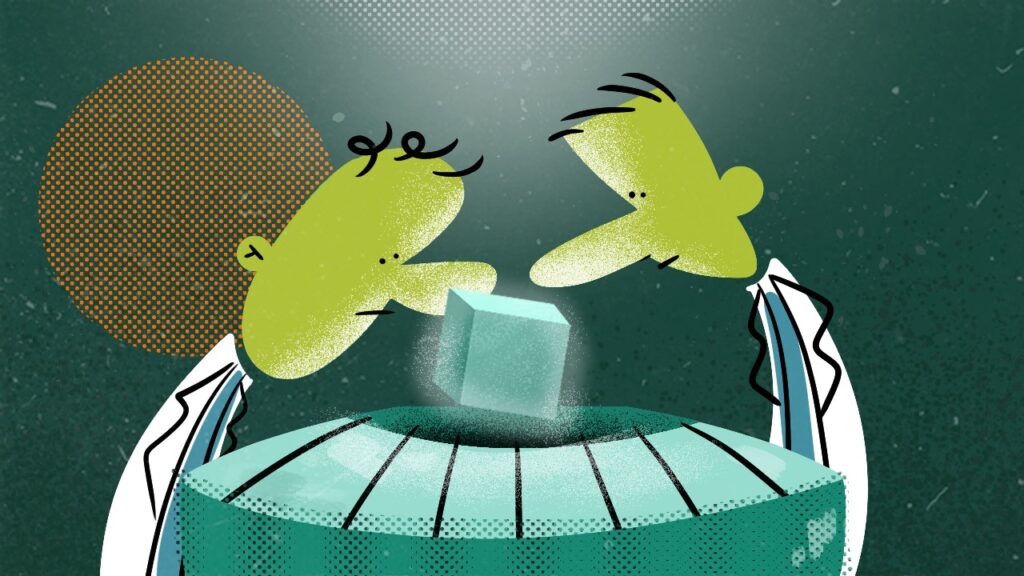
LK-99, a polycrystalline compound composed of lead, oxygen, and phosphorus, was considered a superconductor capable of providing perfect electrical conductivity at room temperature and was intended to transform the field of physics. The unprecedented energy efficiency of room-temperature superconductors is one of their most important advantages. They have low electrical resistance, which results in little energy losses in power transmission and distribution systems. This aims to significantly increase power grid effectiveness, provide more affordable maglev trains, and enable lightning-fast device charging.
Despite electricity’s inefficiency, it barely loses energy when moving through a superconductor. However, current superconductors require expensive specialized settings to operate. What if this could be changed? The idea behind LK-99 is that South Korean scientists claim to have created a superconductor that operates at room temperature. The focus of headlines and social media posts over the past week or two has been a supposed superconductor material developed by scientists in South Korea.
According to Science, scientists talk about doping the material with copper, which they believe may have wrapped the lead atoms in a way that created channels where the superconductivity occurs. Many experts, meanwhile, are doubtful about whether the material works the way scientists say it does. Therefore, unless others can replicate its findings, it is unclear if LK-99 marks a true breakthrough. Some specialists are working toward that goal, but this scientific holy grail has evaded researchers for many years and the prospects are still dark, experts concluded.

The Meissner effect is a property of superconductors wherein they generate magnetic fields and are diamagnetic. The current applications of superconductivity include MRI devices, quantum computers, and magnetic levitation trains. It takes 2,000 liters of expensive and scarce liquid helium to cool an MRI magnet, which is why it is so pricey. Hence, energy, transportation, and many other industries would benefit greatly if researchers were able to discover a superconductor that could operate at ambient temperature.
To ensure that LK-99 or anything similar works, the experiment will, at the very least, need to be repeated and verified in several labs. Even a viable material will require businesses to alter their manufacturing processes. So, the LK-99 can be used by a society full of safety and does not cause fear and doubt, and also can be easily in daily use.
Consider chip production, for instance. According to Siddharth Joshi, an Assistant Professor of Computer Science and Engineering at the University of Notre Dame, it is still unclear whether this kind of superconductor material can be successfully incorporated into the chip manufacturing process in a way that is both economical and not overly burdensome.
Joshi said, “Currently, we don’t build chips presuming you can put superconductors on there.”
“Using superconductors in the design of the chips could lead to interesting designs, but the technology would first need to be mature enough to use it in chips,” he added.

Again, should these studies become successful, they may allow researchers to create chips for more energy-efficient processors. According to Navid Asadi, a professor of electrical and computer engineering at the University of Florida, devices like laptops and smartphones might get even more compact.
One important field of chip design is low-power energy chips. Low-energy chips potentially enable machines to perform more tasks. According to Asadi, it could mean helping recent technology, such as electric and driverless cars, in better navigating the types of driving-related questions they face. According to Dale Rogers, a Supply Chain Expert and Professor at the Arizona State University business school, “The possibility that chips could be faster and more efficient thanks to superconductors also means that they could support the large amounts of computing power and energy required to sustain other artificial intelligence efforts, including generative AI.
“This kind of superconductor breakthrough, if it’s real, can really enable huge advancements and processing abilities in artificial intelligence,” he said.
The evidence that disproves claims made related to LK-99 has accumulated recently. One preprint from the CSIR-National Physical Laboratory in India states, “There is no evidence of superconductivity in LK-99 at room temperature.” (That was one of the studies referenced last August 8, 2023, when the University of Maryland’s Condensed Matter Theory Center declared that “the game is over.”)

The LK-99’s Meissner effect was another critical test. The researchers who discovered LK-99 published a video of a piece of it hovering partially above a magnet. Another widely shared video on social media displayed a different piece of LK-99 created by a Huazhong University of Science and Technology research team that also appeared to float.
Last week, however, another preprint offered a different theory for why the substance floats, dashing expectations that its floating meant that LK-99 is a superconductor. The material is ferromagnetic, according to data gathered by the International Center for Quantum Materials in China. This implies that it may become magnetized and subsequently be drawn to or repelled by other magnetic materials (iron, for instance, is ferromagnetic).
In conclusion, a room-temperature superconductor is a fact. However, other renowned laboratories such as the Argonne National Laboratory of the US Department of Energy, have not yet shared their findings. In addition, there are already well over a dozen publications questioning LK-99 on ArXiv. So, the scientists’ multiple labs need to repeat and verify the experiment to make sure LK-99, or something similar, really works at this current time because there are still doubts about this room-temperature superconductor.

About the author
Hi everyone! My name’s Elyonai Kristina Fanes, but in short, you can call me Ely. Currently, I am a writer at ASEAN Youth Organization – AYO Post. My hobbies are playing music, listening to music, and writing. I love to join music concerts and perform violin in front of many people.

About the artist
Nadya is one of the graphic artists from the multimedia team on AYO Post. Being a recent graduate from Leeds Arts University with an upper second-class honours degree in BA (Hons) Illustration, Nadya’s works consist of bright and funky shapes that are exploding with personality. In her free time, you can find Nadya editing videos, going on walks, and perfecting her knock-knock jokes.